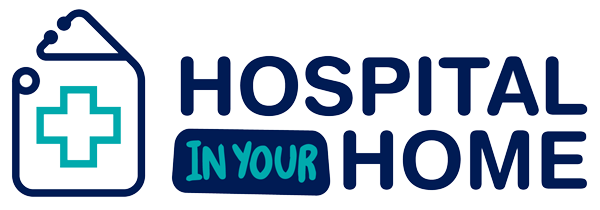How Patient at Home Care Improves Outcomes for Chronic Conditions

The concept of “patient at home” care is revolutionizing how chronic conditions are managed, offering a level of comfort and personalized care that traditional healthcare models simply cannot match.
As we witness a shift toward home-based healthcare, patients, especially those suffering from chronic illnesses, are increasingly reaping the benefits of improved outcomes, fewer hospitalizations, and overall better quality of life.
In this article, we’ll explore how patient at home care is reshaping the healthcare landscape.
Understanding Chronic Conditions
Chronic conditions, such as diabetes, heart disease, and chronic obstructive pulmonary disease (COPD), are long-lasting health issues that require ongoing management.
According to the Centers for Disease Control and Prevention (CDC), chronic diseases account for about 70% of all deaths in the United States each year.
These conditions often require continuous care, regular monitoring, and lifestyle adjustments to prevent complications and avoid hospital readmissions.
For many patients, managing chronic conditions can be an overwhelming burden. Frequent doctor visits, high medical bills, and long hospital stays can add to the stress.
Not to mention, the healthcare system is not always designed for the long-term, personalized care that chronic conditions demand.
This is where patient at home care steps in as a game changer.
The Role of Patient at Home Care
Patient at home care refers to delivering healthcare services directly to a patient’s home, enabling them to receive medical attention without visiting a hospital or clinic.
This type of care includes telemedicine consultations, at-home nursing services, and remote patient monitoring.
By integrating healthcare into the comfort of a patient’s home, the patient at home model provides a holistic, individualized approach to managing chronic conditions.
How It Works
Patient at home care is typically delivered through a team of healthcare professionals, including nurses, physical therapists, and doctors, who collaborate to create a personalized care plan for each patient.
This care plan is based on the patient’s needs, medical history, and lifestyle factors, ensuring they receive the most relevant and effective treatment.
The key components of patient at home care include:
- Telemedicine: Virtual consultations with healthcare providers allow patients to receive timely medical advice without leaving their homes.
- In-Home Medical Services: Nurses or specialized healthcare workers visit the patient’s home to administer medications, monitor vitals, and provide necessary treatments.
- Remote Monitoring: Devices such as blood pressure monitors, glucose meters, and heart rate sensors send real-time data to healthcare providers, allowing for continuous observation and early intervention when necessary.
Key Benefits of Patient at Home Care for Chronic Conditions
Patient at home care is not just about convenience—it’s about improving patient outcomes and enhancing the overall quality of life for those with chronic conditions.
Here are some of the most significant benefits of this model:
1. Personalized Care
One of the primary benefits of patient at home care is the level of personalization it offers.
Unlike traditional healthcare settings, where patients may feel like just another number, at-home care focuses on individualized attention.
Every care plan is tailor-made for the patient, ensuring that treatment is specific to their condition, lifestyle, and preferences.
For example, someone managing type 2 diabetes may receive regular in-home check-ins to monitor their blood sugar levels, ensure proper medication usage, and adjust their diet plan based on real-time results.
This kind of ongoing, hands-on care can lead to significantly better management of the condition.
2. Enhanced Comfort and Peace of Mind
There’s no place like home, especially when you’re unwell. Being in a familiar, comfortable environment can have a significant impact on a patient’s emotional well-being.
Numerous studies show that patients recover faster and experience less stress when treated in their own homes as opposed to a hospital or clinic.
Chronic conditions often require long-term treatment, and hospital stays can be disruptive and stressful.
In contrast, patient at home care allows individuals to stay with their families, maintain their daily routines, and receive care in a setting where they feel safe and secure.
This not only improves patient satisfaction but also contributes to better clinical outcomes.
3. Continuous Access to Care
Patient at home care provides continuous, 24/7 access to medical care.
With telemedicine, patients can consult with healthcare professionals anytime without needing a physical appointment.
Additionally, remote monitoring ensures that healthcare providers are always in the loop regarding the patient’s condition, allowing for swift intervention if any issues arise.
For instance, a patient with congestive heart failure (CHF) can monitor their vitals continuously via a remote device.
If any concerning changes occur—such as an increase in blood pressure—the healthcare team is alerted immediately and can adjust the treatment plan or recommend hospital care if necessary.
This real-time access to care reduces the likelihood of complications and unnecessary hospitalizations.
4. Early Detection of Complications
One of the lesser-known advantages of patient at home care is its ability to detect complications early on.
With regular monitoring and frequent check-ins, healthcare providers can catch potential issues before they become severe.
Early detection is especially crucial for chronic conditions, as many complications if left untreated, can lead to hospitalization or even death.
For example, early detection of fluid buildup in a patient with heart failure can prevent a full-blown cardiac event.
By regularly monitoring weight, blood pressure, and heart rate from home, healthcare professionals can intervene early and adjust medications as needed.
5. Reduced Hospitalizations and ER Visits
A major advantage of patient at home care is the significant reduction in hospitalizations and emergency room (ER) visits.
Chronic conditions often lead to frequent ER trips due to exacerbations or unmanaged symptoms.
However, with patient at home care, these episodes can be minimized or even prevented altogether.
Studies have shown that patients receiving home-based care for chronic conditions like COPD and heart failure have lower rates of hospital readmissions compared to those who rely on traditional healthcare models.
A study published in The Journal of the American Medical Association (JAMA) found that patients who received home-based care had a 26% lower risk of hospital readmission compared to those who received standard care.
This improves patient outcomes and eases the burden on the healthcare system.
Evidence-Based Results
The effectiveness of patient at home care is backed by solid data.
A 2022 study conducted by Health Affairs revealed that patients receiving home-based care for chronic conditions had a 20% reduction in hospital admissions and a 15% reduction in healthcare costs compared to traditional care models.
Additionally, patients reported higher satisfaction rates, citing the comfort and convenience of receiving care in their own homes.
Managing Diabetes at Home
Take the example of a 65-year-old patient managing type 2 diabetes.
With patient at home care, the individual could use remote glucose monitors that automatically uploaded data to their healthcare team.
Through continuous monitoring, the team noticed fluctuations in the patient’s blood sugar levels during specific times of the day and adjusted their insulin dosage accordingly.
This real-time adjustment prevented a potential diabetic crisis and kept the patient out of the hospital.
The Impact of Remote Monitoring on COPD Patients
A lesser-known benefit of patient at home care is remote monitoring technology for chronic obstructive pulmonary disease (COPD) patients.
Traditionally, COPD patients would visit their doctor’s office for regular check-ups, which could miss subtle changes in their condition.
However, patients can monitor their lung function daily with spirometers and pulse oximeters at home.
This technology alerts healthcare providers to any concerning trends, allowing them to adjust medications before the patient experiences an exacerbation.
Such interventions have been shown to reduce the need for hospital admissions by up to 40%.
Comparing Patient at Home Care with Traditional Healthcare Models
Traditional Care: High Costs and Inconvenience
While traditional healthcare provides essential services, it is often costly and inconvenient for those with chronic conditions.
Patients may have to schedule multiple appointments, endure long wait times, and regularly travel to and from healthcare facilities.
Additionally, hospital-acquired infections remain a concern for individuals who spend significant time in hospitals.
Patient at Home Care: A Modern Alternative
On the other hand, patient at home care offers a convenient and cost-effective alternative.
Patients avoid the high costs associated with hospital stays and ER visits, and they receive care tailored to their specific needs without leaving home.
Home-based care is becoming an attractive option for both patients and healthcare providers as healthcare costs continue to rise.
Conclusion
Patient at home care is not just a trend—it’s the future of managing chronic conditions effectively.
This model offers personalized, continuous care in the comfort of home, leading to better patient outcomes, reduced healthcare costs, and an enhanced quality of life for those with chronic illnesses.
As technology advances and legislative support increases, patient at home care is set to become a fundamental part of chronic disease management.
Hospital in Your Home US brings over 30 years of expertise from its successful implementation of hospital at home care in Australia, where it has transformed healthcare for thousands of patients.
Our proven track record makes us uniquely positioned to deliver exceptional home-based healthcare tailored to your needs.
If you or a loved one is managing a chronic condition, contact Hospital in Your Home US to see how we can help you succeed with hospital at home care.
Experience the benefits of expert, compassionate care in the comfort of your own home.
FAQs
What is patient at home care for chronic conditions?
Patient at home care involves delivering medical services and support to individuals with chronic conditions in the comfort of their homes. This approach typically includes routine monitoring, medication management, and personalized care plans tailored to the patient’s unique needs.
How does patient at home care improve health outcomes for chronic conditions?
Home care promotes better health outcomes by ensuring consistent monitoring and early intervention, reducing hospital readmissions. Patients often experience better disease management and improved quality of life due to the personalized attention they receive.
Can patient at home care reduce healthcare costs for chronic conditions?
Yes, by minimizing the need for frequent hospital visits and emergency care, patient at home care can significantly lower healthcare expenses. This cost-effective model focuses on preventative measures and timely care, which reduces the financial burden on patients and healthcare systems.
What types of chronic conditions benefit most from at home care?
Conditions such as diabetes, hypertension, COPD, heart failure, and arthritis can significantly benefit from at home care. These conditions require ongoing management and regular monitoring, which are well-suited to the home care model.
How does patient at home care enhance the patient experience?
Home care fosters a sense of comfort and independence, enabling patients to recover and manage their conditions in a familiar environment. It also encourages stronger communication between patients and healthcare providers, resulting in a more personalized and empathetic approach to care.
